#syrian-classical
Text
Listen to 回憶如風 Memories like the wind II, a playlist by chu-lan-maria on #SoundCloud
生命由具有最高意義的、罕見的、單一時刻和無數的音程組成,在這些中場休息時刻,間歇的暗影充其量在我們周圍盤旋。 愛、春天、每一個優美的旋律,群山、月亮、大海,所有一切都只有一次真心傾訴:即使它永遠不再說了。 因為許多人根本沒有這些音程片段,他們自己只是現實生活交響樂中的間歇和休止符。
Life consists of rare single moments of the highest significance and innumerable intervals in which at best the shadows of those moments hover around us. Love, spring, every beautiful melody, the mountain, the moon, the sea, everything speaks only once truly to the heart: even if it never comes to speak. For many men do not have those moments at all and are themselves intervals and pauses in the symphony of real life.
─ Friedrich Nietzsche 尼采 (1844-1900) 德國的哲學家、詩人、文化批評家、古典語言學家和作曲家。💕
(PS. I don’t own any music and songs right, I just make the playlist for listening easily and enjoy all musicians your works and love to share it only. all copyright belongs to musician & singer. If you want me do delete yours from the playlist, please tell me then I will do it. Blessings! Thanks! Lan~*)
🪷 Ichiro Tsuruta 鶴田一郎
庭園にて 2020
(花園裡 /In the garden) 🪷

#playlist#回憶如風 memories like the wind II#classical#piano#orchestral#soundtrack#arabic-symphonic#syrian-classical#cello#cinematic#new age#strings#contemporary-classical#world#folk#fusion#Jazz#fahir-atakoğlu#luka-sulic#jaqueline-du-pre#ennio-morricone#duduk#doudouk#levon-minassian#armenian-music
33 notes
·
View notes
Text
My lover asks me:
"What is the difference between me and the sky?"
The difference, my love,
Is that when you laugh,
I forget about the sky.
My Lover Asks Me, Nizar Qabbani
#your laughter fills me like a bell#my lover asks me#nizar qabbani#poetry#literature#syrian poets#dark academia#classic academia#light academia
220 notes
·
View notes
Text
ANYWAY wrt to Elagabalus, whenever this conversation comes up I see people make statements like 'Elagabalus was her chosen name' and that I can tell you with confidence is a total fiction. 'Elagabalus' (you'll also see this rendered as 'Elagabal') is the name of the Syrian sun god who the emperor controversially tried to make chief god in Rome.
'Elagabalus' was a posthumous nickname for the emperor that doesn't crop up till the middle of the 4th century AD (Elagabalus died in 222).* Historians continue to use it bcos Elagabalus's full imperial name was Marcus Aurelius Antoninus which was also the full imperial name of predecessor Caracalla and the full name of the emperor Marcus Aurelius. so, for ease of communication the 2 later emperors by that name get referred to by nicknames.
I can't say for sure that the nickname 'Elagabalus' was given to the emperor as an insult but it certainly wasn't a name the emperor would ever have chosen to go by.
*I have seen it used in English translations of earlier sources but I'm pretty sure this is the result of translators putting the common name of the emperor in there. In my copies (Loeb Classical Library - these are facing page editions including the original text and a translation) Cassio Dio refers to 'the False Antoninus' and Herodian just 'Antoninus' and I can read the Greek alphabet just about well enough confirm that the original text says likewise.
#yes i own translations of the relevant bits of both#i took a course on this at university & i never get rid of anything
87 notes
·
View notes
Photo

Ptolemaic Dynasty
The Ptolemaic dynasty was a Macedonian royal family that ruled Ptolemaic Egypt from 323 to 30 BCE. It was founded by Ptolemy I, a general and successor of Alexander the Great. They built Alexandria, including the Lighthouse of Alexandria and the Great Library of Alexandria. The dynasty ended when Rome conquered Egypt in the reign of Cleopatra VII.
The dynasty presented themselves as both Greek kings and Egyptian pharaohs. They never assimilated into Egyptian culture, and their reign began a process of Greek immigration and acculturation in Egypt. The dynasty practiced incestuous marriage, with most rulers marrying close relatives.
The Ptolemaic Empire expanded rapidly before civil wars, territorial losses, and natural disasters weakened it in the 2nd century BCE. The final generations of Ptolemies were reliant on the Roman Republic for military support.
Origins
The Ptolemaic dynasty was founded by Ptolemy I (336-282 BCE), son of Macedonian nobles Lagos and Arsinoe. Ptolemy was one of Alexander's somatophylakes, trusted bodyguards and generals. The dynasty later encouraged a myth that Ptolemy was really the illegitimate son of Philip II of Macedon (r. 359-336 BCE), making him Alexander the Great's half-brother.
Ptolemy was present during Alexander's conquest of Egypt (332 BCE), which was under the oppressive rule of the Achaemenid Empire. Alexander was welcomed by the Egyptian people and proclaimed pharaoh in Memphis. He made offerings to the Egyptian gods, demonstrating his desire to uphold Egyptian tradition, a policy that the Ptolemies would imitate. He also founded Alexandria, a classical Greek city on the coast of Egypt.
visited the oracle of Ammon. But perhaps more significant for the future was Alexander's assumption of the religious titles and honors of the Egyptian king, especially upholding the kingship's linkage to the god Ptah, which ensured the lasting support of his priesthood, a significant factor that continued into the time of Cleopatra.
(Chauveau, chapter 2)
The death of Alexander the Great in Babylon in 323 BCE created a dispute over who would inherit his empire. His half-brother Philip Arrhidaeus was eventually named king, and Alexander and Roxanne's son Alexander IV of Macedon became co-ruler after his birth. Perdiccas took the role of regent, making him effectively its ruler. Alexander's generals, called the Diadochi (lit. "successors" in Greek), became satraps of its provinces. Ptolemy was made satrap of Egypt, the wealthiest and most desirable province.
The Diadochi, including Ptolemy, Seleucus I Nicator, Lysimachus, Crateros, and Antipater, resisted Perdiccas' attempts to control them. In 321 BCE, Ptolemy stole Alexander's mummified body from Perdiccas, who was attempting to bring it back to Macedon. Ptolemy buried Alexander in Memphis, later moving the body to Alexandria, to strengthen his connection to Alexander's legacy. This theft escalated the tension between Ptolemy and Perdiccas, who unsuccessfully attempted to invade Egypt and was killed by his own mutinying troops.
Ptolemy I Soter
Marie-Lan Nguyen (Public Domain)
Philip Arrhidaeus was murdered in 317 BCE, followed by Alexander IV in 310 BCE. The Diadochi finally proclaimed themselves autonomous kings in 306 BCE. This act formally established the Ptolemaic dynasty, which ruled for another 300 years. The Wars of the Diadochi and their descendants fighting over territory resulted in the Syrian Wars (274-168 BCE) fought between the Ptolemies and the Seleucid Empire. Ptolemy I conquered Cyprus, Cyrene, Coele-Syria, and Phoenicia, forming the basis of the Ptolemaic Empire.
Continue reading...
41 notes
·
View notes
Text




SYRIAN CLASSIC PHYSIQUE BODYBUILDER FAYEZ AL KATRIB
See more: https://musclelovergr.blogspot.com/2024/04/alkatreeb.html
Muscle Lover - Social Media
►Facebook: https://www.facebook.com/bigmusclelover
►Instagram: https://www.instagram.com/musclelovergr
►Twitter: https://twitter.com/musclelovergr
►Viber Channel: https://invite.viber.com/?g2=AQAfoJH1UU9vylAA3As4JihLsK%2Fq4uLK0HBBRowIuDhxJBHAhMs4wAus3GriE9cd
#musclelovergr#bodybuilding#bodybuilder#bodybuildinglife#bodybuildinglifestyle#fitness#gym#gymlife#bodybuildingmotivation#gymmotivation#muscle#muscular#musclemass#muscleman#musclemania#muscleworship#musclebeast#powerhouse#Fayez Al Katrib
44 notes
·
View notes
Text
Boycott!

Random rant: I'm an agnostic who was raised Christian, as I've mentioned many times, but it doesn't change the fact that it pisses me off when people write to Muslim women, I love it when they say Islam is misogynistic and then write misogynistic comments about it being " "Take care of your husband", or texts about cleaning the house, or classic texts about September 11… Yes, I often see such comments in shorts and it's a problem that is not talked about (You don't have to mention the texts about taking off the hijab… Because you can see that women can wear whatever they want, unless… that he doesn't agree with your fucked up social norms…)
The very fact that misogyny is accepted as long as it is directed towards Muslims is fucking fucked up (For me it's on par with religious fanatics, they piss me off just as much), and the worst thing is that many people are silent about it (Especially radical feminists…Although they prefer to attack trans and intersex people…)
Yes, it was a rant, I just saw so many comments towards Muslim women on YouTube shorts that I'm fed up (And these are not isolated cases, they are frequent and it sucks, I also see queerphobia, but it is at least publicized, misogyny while towards Muslims it is passed over in silence and it's fucked up)
If the argument for being misogynistic towards women is their head covering, then fuck you, you prove that it's not Islam that's the problem, it's you
If we fight for women's rights, let's fight Islamophobia mixed with misogyny (as well as trans misogyny), because what I see in the comments on the short is too common and we should stop being silent about it, if you are silent, you are not a feminist
Now that I have your attention:
#anime gif#anime#anime and manga#manga#mekakucity actors#kagerou project#kagerou daze#ranting#rant#rant post#personal rant#free palestine#cartoon#cartoonist#palestine#israel is a terrorist state#free gaza#israel#palestina#gaza#misogny#misoginy#youtube#youtube shorts#10 years of gravity falls#gravity falls#gravity falls fandom#palestinian#free free palestine#i stand with palestine
20 notes
·
View notes
Text
Orthodoxy is Catholic

Orthodox people (converts especially) often hear, see, and read; even think, say, and believe, that to be Orthodox, you must adopt the clothing, practices, and language of some culture that is foreign to your own.
This is not something a priest will ever tell you, Thanks be to God, but it is an overall impression that people can gather online, at coffee hour, or at Bible study. It always happens the coolest guy there is studying koine Greek.
Evangelists online, with only the best of intentions (probably a recent seminary student) will recommend converts brush up on their Greek or Church Slavonic. Female ortho-personalities will recommend women not just veil, but wear a pavlovo posad. Be sure to use the liturgical calendar to plan all events, religious or otherwise! The more niche evangelists (Antiochians) will make you learn classical Arabic and grow a beard.
All of these things are well and Good. It is good to learn the liturgical languages. Women should veil and the pavlovo posad is as fine a way as any, and I love the Julian calendar as much as the next girl. I too am studying classical Arabic and beards have my stamp of approval. But none of these are necessary to be Orthodox.
No one needs to make themselves into a Russian, Syrian, or Greek to be Orthodox. I find the accusation that you do to be particularly gross because our whole Liturgical theology goes against this-- our whole evangelistic history goes against this. We have our liturgy in the vernacular for a reason! Saint Herman of Alaska evangelized the way he did for a reason!
Our Church is Catholic. It is Universal. You ought to love the people that God allowed you to be born into.
#christian#christian blog#christian girl#orthodox christianity#greek orthodox#jesus#orthodoxy#orthodox#orthodox christian#orthodox church#eastern orthodoxy#christianity#faith#catholic#Antiochian orthodox#russian#russian orthodox#greek#antioch#syrian christian#jesus christ#jesus christ is lord#christ is lord#theology#ecclesiology#universal#liturgics#liturgy#liturgical studies#patristics
23 notes
·
View notes
Text
Below are 10 featured Wikipedia articles. Links and descriptions are below the cut.
The election in 1860 for the position of Boden Professor of Sanskrit at the University of Oxford was a competition between two candidates offering different approaches to Sanskrit scholarship. One was Monier Williams, an Oxford-educated Englishman who had spent 14 years teaching Sanskrit to those preparing to work in British India for the East India Company. The other, Max Müller, was a German-born lecturer at Oxford specialising in comparative philology, the science of language.
Adolfo Farsari (Italian pronunciation: [aˈdolfo farˈsaːri]; 11 February 1841 – 7 February 1898) was an Italian photographer based in Yokohama, Japan. His studio, the last notable foreign-owned studio in Japan, was one of the country's largest and most prolific commercial photographic firms. Largely due to Farsari's exacting technical standards and his entrepreneurial abilities, it had a significant influence on the development of photography in Japan.
Girl Pat was a small fishing trawler, based at the Lincolnshire port of Grimsby, that in 1936 was the subject of a media sensation when its captain took it on an unauthorised transatlantic voyage. The escapade ended in Georgetown, British Guiana, with the arrest of the captain, George "Dod" Orsborne, and his brother. The pair were later imprisoned for the theft of the vessel.
Abu Muhammad Hasan al-Kharrat (Arabic: حسن الخراط Ḥassan al-Kharrāṭ; 1861 – 25 December 1925) was one of the principal Syrian rebel commanders of the Great Syrian Revolt against the French Mandate. His main area of operations was in Damascus and its Ghouta countryside. He was killed in the struggle and is considered a hero by Syrians.
Marjorie Cameron Parsons Kimmel (April 23, 1922 – July 24, 1995), who professionally used the mononym Cameron, was an American artist, poet, actress and occultist. A follower of Thelema, the new religious movement established by the English occultist Aleister Crowley, she was married to rocket pioneer and fellow Thelemite Jack Parsons.
Maya stelae (singular stela) are monuments that were fashioned by the Maya civilization of ancient Mesoamerica. They consist of tall, sculpted stone shafts and are often associated with low circular stones referred to as altars, although their actual function is uncertain. Many stelae were sculpted in low relief, although plain monuments are found throughout the Maya region. The sculpting of these monuments spread throughout the Maya area during the Classic Period (250–900 AD), and these pairings of sculpted stelae and circular altars are considered a hallmark of Classic Maya civilization.
The North Norfolk Coast Site of Special Scientific Interest (SSSI) is an area of European importance for wildlife in Norfolk, England. It comprises 7,700 ha (19,027 acres) of the county's north coast from just west of Holme-next-the-Sea to Kelling, and is additionally protected through Natura 2000, Special Protection Area (SPA) listings; it is also part of the Norfolk Coast Area of Outstanding Natural Beauty (AONB). The North Norfolk Coast is also designated as a wetland of international importance on the Ramsar list and most of it is a Biosphere Reserve.
Preening is a maintenance behaviour found in birds that involves the use of the beak to position feathers, interlock feather barbules that have become separated, clean plumage, and keep ectoparasites in check. Feathers contribute significantly to a bird's insulation, waterproofing and aerodynamic flight, and so are vital to its survival. Because of this, birds spend considerable time each day maintaining their feathers, primarily through preening.
The Wells and Wellington affair was a dispute about the publication of three papers in the Australian Journal of Herpetology in 1983 and 1985. The periodical was established in 1981 as a peer-reviewed scientific journal focusing on the study of amphibians and reptiles (herpetology). Its first two issues were published under the editorship of Richard W. Wells, a first-year biology student at Australia's University of New England. Wells then ceased communicating with the journal's editorial board for two years before suddenly publishing three papers without peer review in the journal in 1983 and 1985. Coauthored by himself and high school teacher Cliff Ross Wellington, the papers reorganized the taxonomy of all of Australia's and New Zealand's amphibians and reptiles and proposed over 700 changes to the binomial nomenclature of the region's herpetofauna.
Wulfhere or Wulfar (died 675) was King of Mercia from 658 until 675 AD. He was the first Christian king of all of Mercia, though it is not known when or how he converted from Anglo-Saxon paganism. His accession marked the end of Oswiu of Northumbria's overlordship of southern England, and Wulfhere extended his influence over much of that region.
26 notes
·
View notes
Text
tips for writing arab characters
writer here!! im a middle eastern writer whos noticed that theres a VERY significant lack of info on how to write arabs, so im here to help !! (however, keep in mind that im specifically gulf arab and may not be able to provide as much info on levant arabs or north african arabs. if there are any on here, feel free to reblog w more info !! )
dont get arabs mixed up w muslims. yes, a large portion of the arab population are muslim, but youd be surprised at the number of non-muslim arabs that exist. if you wanna write abt a muslim character, a post i made that might help is here
list of arab countries, with the adjective:
algeria — algerian
bahrain — bahraini
the comoros islands — comorans
djibouti — djiboutian
egypt — egyptian
iraq — iraqi
jordan — jordanian
kuwait — kuwaiti
lebanon — lebanese
libya — libyan
morocco — moroccan
mauritania — mauritanian
oman — omani
palestine — palestinian
qatar — qatari
kingdom of saudi arabia (ksa) — saudi
somalia — somali
sudan — sudanese
syria — syrian
tunisia — tunisian
united arab emirates (uae) — emirati
yemen — yemeni
dialects/language:
dialects greatly differ—the egyptian dialect is the most common, followed closely by the levantine dialect
classic arabic is called fusha (fuss-ha), used in things like official documents, media, education. every arab knows it but its not used in day to day language except in media (all dialects basically come from fusha, but with slight changes)
'p' and 'g' (as in 'gurgle' or 'goal') dont exist in the arabic alphabet, theyre replaced with 'b' and 'j'
depending on where theyre from, they may also learn a third language besides arabic and english (e.g. moroccans know french, a berber arab may know berber)
appearance:
arabs look different based on where theyre from. if theyre from the arabian peninsula, they have thick curly dark hair, tanned skin, and dark eyes. levant arabs are lighter skinned, and green/blue eyes are more common with them
adding on to previous point, arabs have a variety of skin tones, even if theyre siblings. using a real example, me and my older brother respectively look white passing and afro hispanic
dark irises are considered better looking than lighter colored eyes. eyes are usually thick-lashed, with big round slightly upturned eyes
big noses are common, along with full lips (and hereditary dark circles for those with more tanned skin)
high cheekbones and well structured faces are also prevalent
culture:
varies depending on location
influenced by indian culture, IS NOT INTERCHANGEABLE WITH INDIAN CULTURE. that was aladdins mistake
poetry is so common, especially with romantic themes
songs also have romantic themes
youd be surprised at how romantic arabs are
dances vary extremely, from dabke (palestinean dance done in groups, consisting largely of leg/foot movements) to yola (emirati dance with battle origins, done using canes or fake guns) i recommend watching videos (tiktok has a lot of videos esp of dabke)
women also dance but you wont find a lot of videos of it bc its inappropriate
etiquette:
things such as giving someone your back, or facing the bottom of your feet towards someone are considered rude
pda is also taboo (even with straight couples or even sometimes married couples)
cheek kisses are a common way of greeting, but not between genders
in some gulf countries, men greet each other with a nose kiss (not in an intimate way) just stubbing their noses against each other
genders do not mix at all. schools tend to divide girls and boys into two sections starting at a certain age (around age 10/11), and mosques are split into the mens side (usually larger than womens bc men use the mosque more)
having an extramarital relationship is very very taboo (even w hetero relationships) but it still happens. a lot.
family dynamics (note that this is obviously a spectrum. this is the general dynamic, but obv it ranges from family to family):
NOT ALL OF US HAVE ABUSIVE PARENTS. sure theyll spank you if you skip school, but thats not necessarily abusive. its more strict, and youd be surprised at the amount of freedom some parents give their kids
yes, arranged marriages do happen. no, they arent necessarily forced, it just means that your parents had a hand in deciding who youll marry. yes, marrying cousins is a thing, but its much less prevalent now (also, ew)
fathers care. a lot. they dont show it, but they do. they also tend to joke around a lot
mothers tend to be the rule enforcers, and by far our moms are our best friends. we tell them EVERYTHING i swear
aunties gossip a lot
uncles are a safety hazard
its not uncommon to have a large number of cousins (mainly bc arabs tend to have a lot of kids)
the average number of children 3 per woman, but from personal experience the older the generation the more kids (e.g. my great-grandmother had a whopping thirteen kids, my grandmother had seven, my mom has six, but a couple of my aunts only have one or two)
social class/work environment/school environment:
schools tend to be either arab curriculums but there is a high density of american/british curriculum schools
boys and girls tend to be separated in school around age nine/ten but some schools will be mixed genders up till graduation
yes, women work, tho admittedly some of them tend to have careers more than jobs (e.g. photographer, writer, etc while the men handle engineering, economics, etc)
no, not all of us are rich. in fact, countries like jordan, egypt, tunisia, morocco, and yemen (and infamously palestine) are acc struggling w poverty. its mainly just gulf arabs who are rich
furthermore, gulf arabs may be generally rich but a large chunk of them have the same lifestyle as an upper-middle class family in the usa. rich but not too rich. dont be fooled by the videos of guys wearing kandoras and driving lambos
speaking of kandoras...
outfits (keep in mind that spelling may vary since its all transliteration, and pronunciation may vary depending on region) (also keep in mind that even if we still live in the middle east, WE CAN WEAR JEANS AND HOODIES AND BAND SHIRTS. just, usually cover up more in public):
abaya: loose overgarment worn by women
jilbab/chandoor: also worn by women, type of long dress or tunic
the white robe all of yall know is known as a thobe, dishdasha, or kandora
the colored headscarf worn by men is known as a ghuthrain in the gulf, kevfiah in the levant. its kept in place with a black cord called a aghal, and under it they wear a skullcap called a thagiyah
those are the most common ones, however if youd like to get a lil more specific on clothong, the ultimate guide to arab clothing is here (it also has specified clothing for individual countries)
hope this helps, feel free to reblog w more info if you have any !!
#writing tips#writing arabs#arab#writer sources#writing help#writers on tumblr#writeblr#writing advice
118 notes
·
View notes
Text


🍅🦇 @birdietrait did someone say vampire ?
Josiah, formerly known as Jafaar, carries the weight of centuries on his shoulders, a vampire born in the desolate landscapes of Somalia, forever bound to the shadows after a fateful encounter in the mid-1720s. Captured and turned by a Syrian vampire, he was whisked away to the unfamiliar terrain of Syria, where he was reluctantly introduced to a royal vampire family.
In his formative years, Josiah immersed himself in the pursuit of knowledge, studying languages and literature, and clandestinely devising intricate plans for the royal family that held him captive. However, the flame of his ambition was extinguished when the longing to find his birth parents, a desire he had harbored since adolescence, was abruptly silenced.
Growing up as an oppressed and envious teenager, Josiah transformed into a bitter young adult, seeking refuge in the intellectual haven of Europe—specifically England—during the mid-1840s. University life exposed him to capitalist and economist ideologies, molding his worldview as he delved into the intricacies of societal structures.
His journey into the nocturnal realm began with a sinister twist, as his first taste of blood was drawn from one of his professors. A predator in the shadows, he continued his nocturnal pursuits without ever being exposed. As the decades unfolded, he evolved with the changing times, returning to Somalia in the 1970s with a desperate quest to reunite with his birth parents, only to be met with the harsh reality of their long-departed lives.
Returning to the United States, Josiah adapted to the ever-evolving social landscape of the 21st century, attempting to blend in with the trends and norms of the time while clinging to his deep-seated beliefs. His younger sister, a relentless force of change, compelled him to undergo a transformation – tattoos, piercings, a new hairdo, and a wardrobe overhaul – all in an attempt to assimilate into contemporary society. Yet, beneath the superficial alterations, Josiah longs for the simplicity of his original attire, appearing almost robotic in his detachment from the ever-changing fashions.
In the present day of 2023, Josiah finds himself in the forgotten hollow, a place that holds a singular purpose for him. With an enigmatic goal set firmly in his immortal mind, he navigates the delicate balance between adapting to the current era and preserving the essence of his timeless existence, forever haunted by the echoes of his past and the insatiable thirst for the unknown.
TRIVIA:
Fashionable Anachronism: Despite his sister's attempts to modernize his appearance, Josiah secretly hoards a collection of clothing from various eras, finding comfort in the timeless elegance of garments that reflect the epochs he has traversed.
Literary Pursuits: Josiah's love for languages and literature extends beyond his mortal life. He has amassed a private library filled with rare manuscripts, preserving the stories that have shaped his understanding of the world. One of his prized possessions is an ancient tome written in a language long forgotten by mortals.
Musical Tastes: While he outwardly adapts to the music of the modern era, Josiah secretly cherishes classical compositions from his youth. He has been known to haunt hidden concert halls, drawn to the haunting melodies that echo the melancholy of his immortal existence.
Hidden Talents: Josiah possesses a keen talent for calligraphy, a skill he developed during his youth while studying languages. He often spends the quiet hours of the night crafting intricate scripts and inscriptions, each stroke a testament to his centuries-long pursuit of perfection.
Artistic Reflections: In a concealed chamber of his dwelling, Josiah maintains a gallery of portraits capturing moments from his past. Each painting tells a silent tale of the people he has encountered and the cities he has watched evolve, providing a haunting backdrop to his eternal existence.
Nocturnal Philanthropy: Unbeknownst to the mortal world, Josiah channels his capitalist inclinations into philanthropic endeavors during the night. He discreetly funds projects that align with his vision of societal improvement, drawing from the wealth accumulated over centuries.
Unquenchable Thirst for Knowledge: Josiah is a perpetual student of the world, and he continually enrolls in university courses under various aliases. His insatiable thirst for knowledge spans disciplines, from cutting-edge technology to ancient philosophies, allowing him to seamlessly blend into different intellectual circles over the years.
Classical Arabic: Being born in Somalia and later taken to Syria, Josiah mastered Classical Arabic, delving into its rich literature and linguistic nuances.
Syriac: A language with historical significance in the region, Josiah became fluent in Syriac during his time in Syria, connecting with the ancient roots of the supernatural world.
Latin: As a young adult in Europe during the mid-1840s, Josiah immersed himself in the study of Latin, a language that granted him access to the scholarly and philosophical works of the time.
English: Moving to England for university, Josiah not only learned English but excelled in it. His linguistic proficiency allowed him to navigate the rapidly evolving social and intellectual landscape of 19th-century England.
French: Embracing the cultural diversity of Europe, Josiah added French to his repertoire, finding himself captivated by the elegance of the language and its literary treasures.
Somali: Despite his nomadic existence, Josiah retained a deep connection to his roots, maintaining fluency in Somali to honor his heritage and communicate with those from his homeland.
Italian: In his pursuit of art and culture, Josiah picked up Italian during the Renaissance, allowing him to appreciate the masterpieces of the era and connect with the intellectual elite.
Spanish: Venturing into the exploration of the New World, Josiah acquired fluency in Spanish, enabling him to engage with the diverse cultures and civilizations flourishing in the Americas.
German: With a keen interest in the economic and philosophical discourse of the time, Josiah became fluent in German, immersing himself in the works of influential thinkers from the German-speaking world.
Mandarin Chinese: Embracing the advancements of the 20th century, Josiah learned Mandarin Chinese, recognizing its growing importance on the global stage and adapting to the changing geopolitical landscape.
#ts4#ts4 cas#ts4 screenshots#ts4 screenies#kristen's.sims#s: josiah#*coven of simblrs#he's dark academia coded.. very game of thrones#but his sister 😶 is like “get a fucking iphone we live in a society now”#he aspires to be a psychologist but who knows if he's set for that..#he has a love-hate relationship with his “family”
60 notes
·
View notes
Note
can i ask for lesbian book recommendations 🥹🕺
yeassss ofc my love <3
erm and obligatory disclaimer for any who might read that i don’t think “queer” or “lesbian” is a necessarily coherent category of books or adequate descriptor for a novel which is why i’ve also provided the actual genres here (sorted into which ever one i felt best fit) and descriptions. and these books have much more going on than just being about lesbians. however all books are undeniably awesomer with lesbians so yayyyyy
FANTASY:
-the salt grows heavy by cassandra khaw: fantasy horror; murderous mermaid and plague doctor come across a cult of children (could be read as not lesbians bc one character is nonbinary but i choose to read as. lesbians)
-the empress of salt and fortune by nghi vo: political fantasy; monk unravels the tale of exiled empress’ rise to power
-when the the tigers came down the mountain by nghi vo: political fantasy; monk unwinds the tale of a tiger and her scholar lover to prevent other tigers from eating them (stand alone sequel to empress of salt and fortune)
-ship of smoke and steel by django wexler: ya fantasy; girl has to steal a ghost ship to save her sister’s life
-the mermaid, the witch, and the sea by maggie tokuda-hall: ya fantasy; pirate falls in love with one of the ship’s hostages, a girl being sent to an arranged marriage against her will
-tremontaine created by ellen kushner: political fantasy; there’s a lot going on in this one okay just trust me that it’s really good esp if you love political intrigue (this was released serially and is easiest to acquire an electronic version)
-the deep by rivers solomon: fantasy/spec fic; African slave women thrown overboard gave birth to mermaid-esque descendants. one holds these traumatic memories for her whole people and must grapple with that pressure
-wild beauty by anna-marie mclemore: ya magical realism/fantasy; a family of women who can create flowers and whose lovers always tragically vanish fight to keep their land and to unravel the mystery of a strange boy who appeared
-siren queen by nghi vo: historical magical realism/fantasy; girl’s rise to stardom amidst the monsters of hollywood back in the days of the studio system
-gideon the ninth by tamsyn muir: sff; um. how to explain briefly. gideon wants nothing more than to leave the ninth house, but her nemesis harrowhark needs her sword skills to pass the emperors trial and become immortal. sure. (caleb i know you’ve read this just adding for any other viewers yayyy)
HORROR:
-white is for witching by helen oyeyemi: horror fantasy/magical realism; a house with women in its walls calls to miranda silver while the people she leaves behind struggle to make sense of what happened to her
-plain bad heroines by emily a. danforth: historical horror; when filming a movie about the macabre history of a boarding school, its past starts to become the reality for the stars and author of the novel it’s based on
LITFIC:
-girl woman other: contemporary litfic; the intersecting stories of Black british women told in verse
-nightwood: classic literary; i feel like i can’t describe this one well but nora and jenny are obsessed with robin, whose penchant for wandering and inability to commit drives them crazy. toxic dyke drama at its best
-the thirty names of night: lit fic; transmasc syrian american unravels the history of artist laila z who encountered the same rare bird his mother saw right before her death and realizes their pasts are intertwined
-under the udala trees: historical lit fic; coming of age set against the backdrop of civil war in Nigeria, two girls from different ethnic communities fall in love
-everyone in this room will someday be dead: contemporary lit fic; that moment when your ocd lands you a job at the catholic church even though you’re an atheist and also your relationship is falling apart
-stone butch blues: historical lit fic; butch lesbian realizing and grappling with her identity throughout the 40s-70s
-the color purple: classic lit fic; story of two sisters separated in their youth—one is forced into an abusive marriage and falls in love with her husbands mistress, wondering what became of her sister
-oranges are not the only fruit: semi-autobiography with slight fantasy elements; exploring growing up lesbian in a deeply religious pentecostal sect
SCI-FI:
-the weight of the stars: ya sf romance; aspiring astronaut is forced into friendship with a girl who waits on the roof every night for radio signals from her mother in space
-the seep: sci-fi/spec fic; what if aliens invaded and formed a hive mind of everyone and also your girlfriend turned into a baby again. wouldn’t that be fucked up
-the stars are legion: political science fiction; an awakes with no memory amid a group of people calling themself her family who claim she is the only one who can save their world
-not your sidekick: ya sci-fi; superheroes are real and they fucking suck
SHORT STORIES:
-sarahland: contemporary/spec fic short story collection; various stories about people named sarah
32 notes
·
View notes
Text
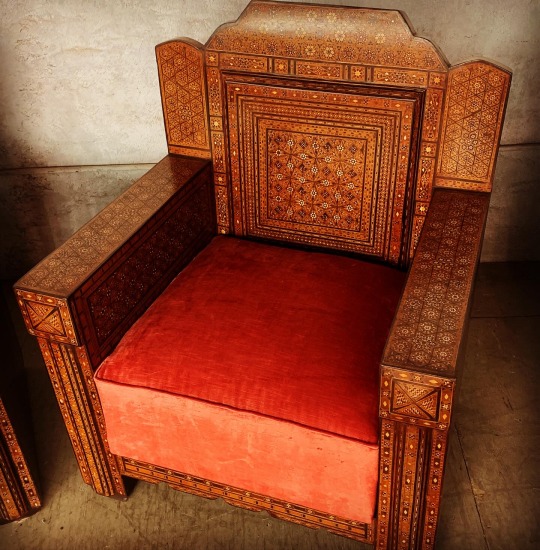


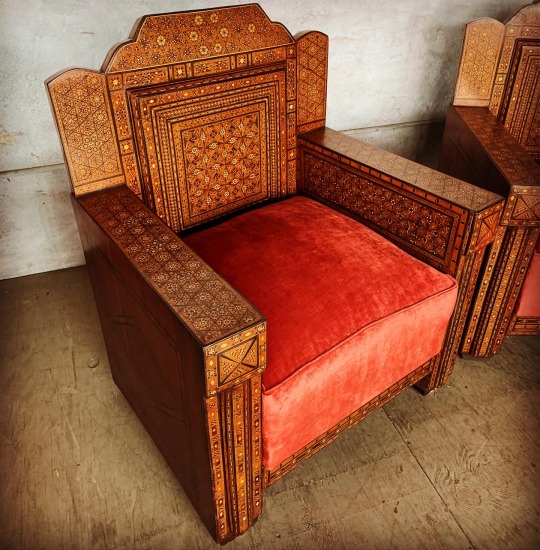



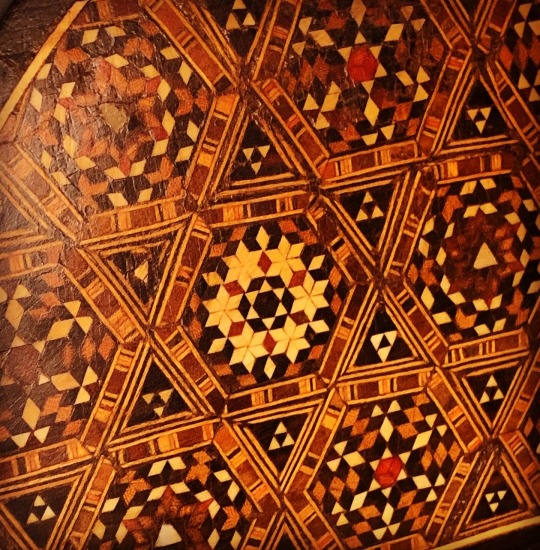


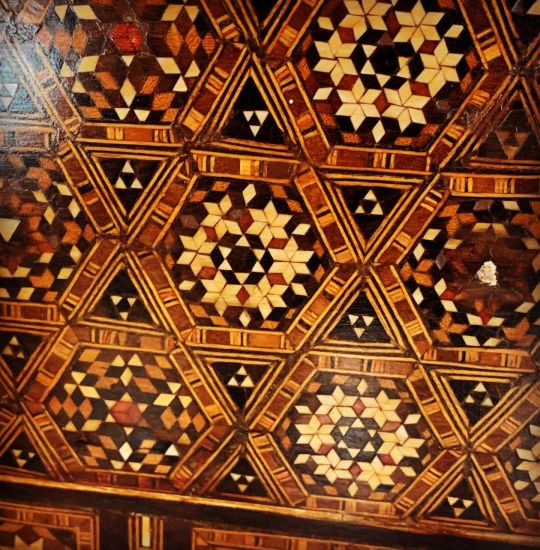
MOORISH CLUB CHAIRS
Stunning pair of turn of the century Syrian smoking / club chairs. Hand inlaid with bone, mother of pearl and a variety of exotic woods with mesmerizing patterns. The chairs have an Art-Deco / modern feel to them , so will go fantastic with any classic or modern interior. Raised panels on back and arms. Cushions have been re upholstered in a salmon tone velvet. Best pair of Club chairs I had in the shop in years , these are extremely rare to find. Wide seats , super comfortable too ! Takes you back to a classic Gentleman’s club or Cigar room, just out of a Wes Anderson movie.
Item No. E5737
Dimensions: 39.5″ tall x 32″ wide x 25″ deep . Seat is 23″ wide x 22″ deep x 18″ floor to seat high.
List Price. $ 6500
504.581.3733 / t
#antiques#magazine street#new orleans#interior decor#interior design#nola#interiors#new orleans antiques#collectibles#oddities#one of a kind#moorish style#art deco#syrian antiques#syrian#club chairs#smoking chairs#wes anderson#marakech
52 notes
·
View notes
Note
What’s your general timeline regarding fashion in Westeros, from Aegon’s conquest (or even pre-conquest) to modern times? (E.g dance of the dragons: 1400s renaissance fashion, mid 200AC: Tudor fashion). Is it just a mixing pot?
So glad u asked keep in mind I’m playing fast and loose with all this I will probably come up with a new idea in two days that makes me disregard half the stuff on here (also yes some of it is just a melting pot and years of inspo are not always in order)
1. 20s BC-Early AC years: I get a sense of very early medieval fashion around this time. Think 1100s-1200s. All of it is fairly similar, with small tweaks based on location
2. Aenys-Maegor: this is where i think the “classic” medieval European look begins to take off. So think like the 1300s
3. Jaehaerys: I haven’t strongly defined the first century AC, but I do think I have a melting pot made up of mostly early 1600s (with some typical medieval princess looks thrown in there for the daughters)
4. Viserys I-Aegon IV: to me this is very typical 1600s Western European court fashion for the dance all the way to Aegon the unworthy. The general shape and style of clothes lasts for a long time, but details change over the course of each kings reign
5. Daeron-Maekar: this is much more modest era of fashion and more subdued. It makes me think of Burgundian styles and maybe early 1400s?
6. Egg-Aerys: this is when we start creeping in on typical Renaissance fashion. The Italian renaissance I have in mind particularly for Eggs reign. We also start getting hints of 1500s English fashion
7: Current era: this is mostly 1500s English, but again still a mix of stuff. Y’all have seen my posts I have Northerners in traditional Russian clothing and Dornishmen in Syrian and Saudi outfits most of the kingdoms do not fit into the same irl era
#asoiaf#asoiaf hair and clothing#lowkey so hard to correlate these to real eras#bc certain things fit better at the wrong time periods like#the 1600s are good for the dance but the 1500s are perf for the modern era#I do wish it could be cut and dry but alas
52 notes
·
View notes
Photo

The Ptolemies, Rise of a Dynasty: Ptolemaic Egypt 330–246 BC
The first volume of John D. Grainger's trilogy on the Ptolemaic Kingdom provides an overview of Ptolemaic history from 330 to 246 BCE. It explains the formation of the Ptolemaic Kingdom, focusing on the reign of Ptolemy II. A new overview of the Ptolemies is a timely idea but the result is underwhelming. The book adequately covers the dynasty's development and interactions with neighboring states. Yet, Grainger's shallow grasp of politics and society in Ptolemaic Egypt decreases its value.
In the introduction, Grainger makes the disconcertingly false claim that Ptolemaic Egypt’s political and military affairs were solely the province of Greek immigrants. He further states that no native Egyptian held office “above the level of the village headman.”(xii) This statement seemingly ignores the plethora of evidence for Egyptian governors, ministers, scribes, and priests who helped to run Egypt during the reign of Alexander the Great and his successors. Strangely, Grainger contradicts himself later in the book by briefly touching on Egyptian participation in the Ptolemaic military and political administration.
This initial flawed premise may be excused as a pretext for Grainger to focus on the historical accounts of Greek authors rather than on evidence from Ptolemaic Egypt. This would be an understandable decision on its own merit, as Greek history should be closer to the author's area of expertise. Unfortunately, the book falls short of even this limited goal. The usual primary sources are cited to build the basic framework of Ptolemaic history, but there is little critical analysis of these sources. The Ptolemies, Rise of a Dynasty is primarily a succinct summary of ancient authors such as Arrian, Diodorus Siculus, Justin, Pausanias, and Curtus Rufius, although it is not usable as a sourcebook.
Grainger succeeds in explaining the creation of fundamental Ptolemaic institutions, such as the royal cult, sibling marriage, and the cleruchic system of landed settler-soldiers. His grasp on Ptolemaic bureaucracy and fiscal policy is somewhat weaker, but this is fortunately not a focus of the book. Grainger makes the case that the foundational dynastic policies established under Ptolemy II, whose reign is often considered a high point in Ptolemaic history, actually paved the way for the dynasty's demise. He states that “the autocratic, extravagant, and unmilitary choices of Ptolemy II contributed directly to his empire’s eventual collapse.” (p. 260) This is an interesting idea, although it is never fully developed or expanded upon.
This book shines in its description of Mediterranean power struggles, guiding readers through Ptolemy I’s wars against the other Diadochi and Ptolemy II’s coastal wars from Asia Minor up to the Aegean. The Ptolemaic Kingdom's connections with the broader ancient world, from India to the Black Sea, are also mentioned. The first two Syrian Wars feature prominently, establishing the central conflict between the Ptolemaic Kingdom and the Seleucid Empire. The book closes with a brief period of peace during the end of Ptolemy II's reign, though readers are left with a good impression of how the seeds of future conflicts had already been shown.
The book has a handful of basic maps at the beginning, which are sufficient to help readers visualize where the action takes place. There is a collection of mostly public-domain images in the middle of the book. Grainger is at his best in the endnotes, when he is pointing readers in the direction of better books such as Gunther Hölbl’s A History of the Ptolemaic Empire (2001).
John D. Grainger is a former teacher and independent scholar. He has authored numerous books on Classical history, including multiple volumes dealing with the Hellenistic period and the Diadochi.
Continue reading...
24 notes
·
View notes
Text

A U.K. Museum Claims Roman Emperor Elagabalus Was Transgender
The North Hertfordshire Museum will refer to the 3rd-century ruler using she/her pronouns.
Third century C.E. Roman Emperor Elagabalus was transgender, says the North Hertfordshire Museum in the U.K., which will be referring to the ruler with she/her pronouns.
The change is in keeping with museum policy that states that pronouns used in its displays will be those “the individual in question might have used themselves” or whatever pronoun is “in retrospect, appropriate,” according to a report in the Telegraph.
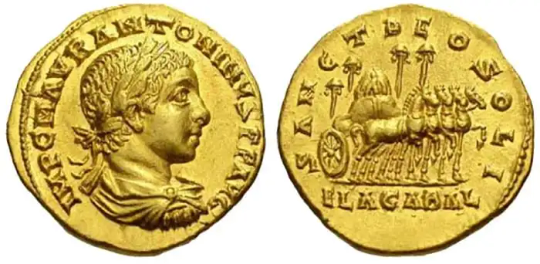

The museum owns a coin minted in the reign of Elagabalus, who ruled Rome from 218 to 222 C.E., when the emperor was assassinated at age 18. It has been used in LGBTQ-themed displays. According to the museum, it consults with Stonewall, an LGBTQ+ charity, and trade union Unison’s LGBT wing for best display practices.
“Elagabalus most definitely preferred the she pronoun, and as such this is something we reflect when discussing her in contemporary times,” Keith Hoskins, Liberal Democrat councillor and executive member for arts at the Liberal Democrat and Labour coalition-run North Herts Council, told the Telegraph.
“We try to be sensitive to identifying pronouns for people in the past, as we are for people in the present,” he said. “It is only polite and respectful. We know that Elagabalus identified as a woman and was explicit about which pronouns to use, which shows that pronouns are not a new thing.”

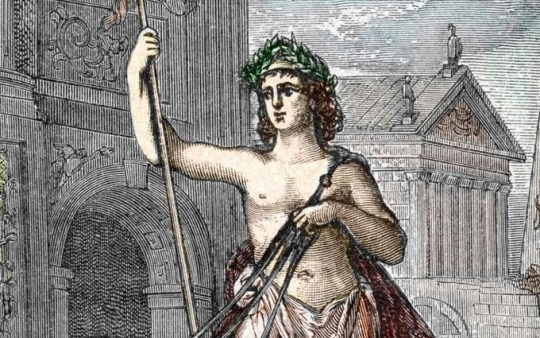
Cassius Dio, who chronicled the history of Rome, wrote that Elagabalus was “termed wife, mistress, and queen,” telling one lover, “Call me not Lord, for I am a Lady.” Elagabalus even reportedly asked to have female genitalia fashioned for her.
There is some disagreement among historians about the meaning of the classical texts in which Elagabalus asks to be called “lady,” however, according to the Telegraph, with some deeming it an attempt at character assassination. Dio served the reign of emperor Severus Alexander, who succeeded Elagabalus, and used such behavior as justification for the assassination.
“The Romans didn’t have our idea of ‘trans’ as a category,” Andrew Wallace-Hadrill, a Cambridge classics professor, told the Telegraph, adding that “they used accusations of sexual behavior ‘as a woman’ as one of the worst insults against men.” Wallace-Hadrill also indicates that racism may have played a part, since Elagabalus was Syrian and not Roman.
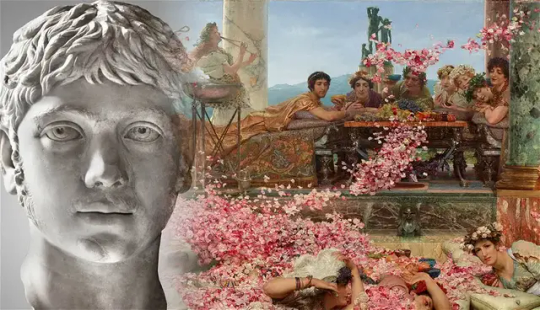
Marcus Aurelius Antoninus (c. 204 – 11/12 March 222), better known by his nicknames Elagabalus and Heliogabalus, was Roman emperor from 218 to 222, while he was still a teenager. His short reign was notorious for sex scandals and religious controversy. A close relative to the Severan dynasty, he came from a prominent Arab family in Emesa (Homs), Syria, where since his early youth he served as head priest of the sun god Elagabal. After the death of his cousin, the emperor Caracalla, Elagabalus was raised to the principate at 14 years of age in an army revolt instigated by his grandmother Julia Maesa against Caracalla's short-lived successor, Macrinus. He only posthumously became known by the Latinised name of his god.
Later historians suggest Elagabalus showed a disregard for Roman religious traditions and sexual taboos. He replaced the traditional head of the Roman pantheon, Jupiter, with the deity Elagabal, of whom he had been high priest. He forced leading members of Rome's government to participate in religious rites celebrating this deity, presiding over them in person. He married four women, including a Vestal Virgin, in addition to lavishing favours on male courtiers thought to have been his lovers. He was also reported to have prostituted himself. His behavior estranged the Praetorian Guard, the Senate and the common people alike. Amidst growing opposition, at just 18 years of age he was assassinated and replaced by his cousin Severus Alexander in March 222. The assassination plot against Elagabalus was devised by Julia Maesa and carried out by disaffected members of the Praetorian Guard.
Elagabalus developed a reputation among his contemporaries for extreme eccentricity, decadence, zealotry and sexual promiscuity. This tradition has persisted; among writers of the early modern age he endured one of the worst reputations among Roman emperors. Edward Gibbon, notably, wrote that Elagabalus "abandoned himself to the grossest pleasures with ungoverned fury". According to Barthold Georg Niebuhr, "the name Elagabalus is branded in history above all others" because of his "unspeakably disgusting life". An example of a modern historian's assessment is Adrian Goldsworthy's: "Elagabalus was not a tyrant, but he was an incompetent, probably the least able emperor Rome had ever had." Despite near-universal condemnation of his reign, some scholars write warmly about his religious innovations, including the 6th-century Byzantine chronicler John Malalas, as well as Warwick Ball, a modern historian who described him as "a tragic enigma lost behind centuries of prejudice".
#Roman Emperor Elagabalus#A U.K. Museum Claims Roman Emperor Elagabalus Was Transgender#ancient artifacts#archeology#archeolgst#history#history news#ancient history#ancient culture#ancient civilizations#ancient rome#roman history#roman empire#roman emperor#long reads#long post
47 notes
·
View notes
Text
Palestinian Recipes from The Immigrant Cookbook by Leyla Moushabeck
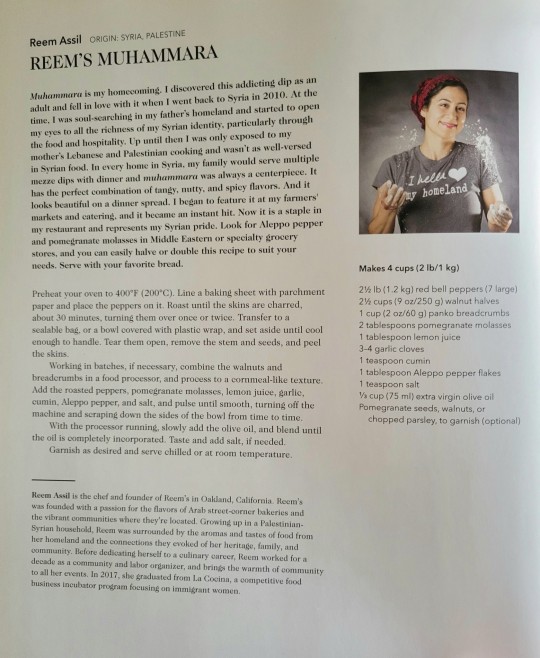

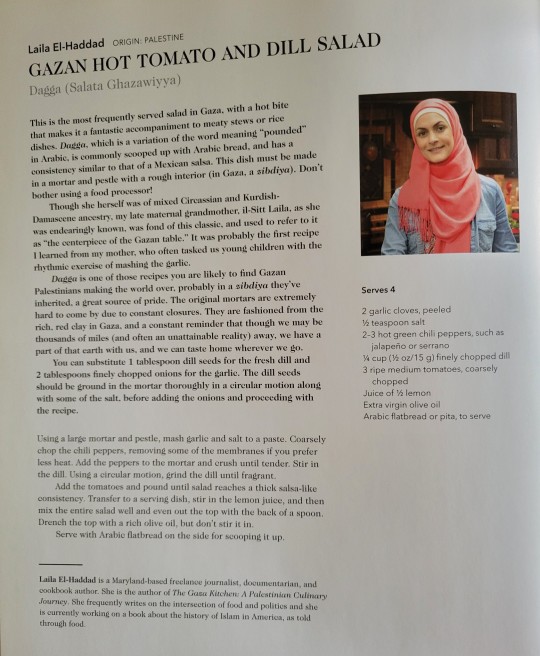
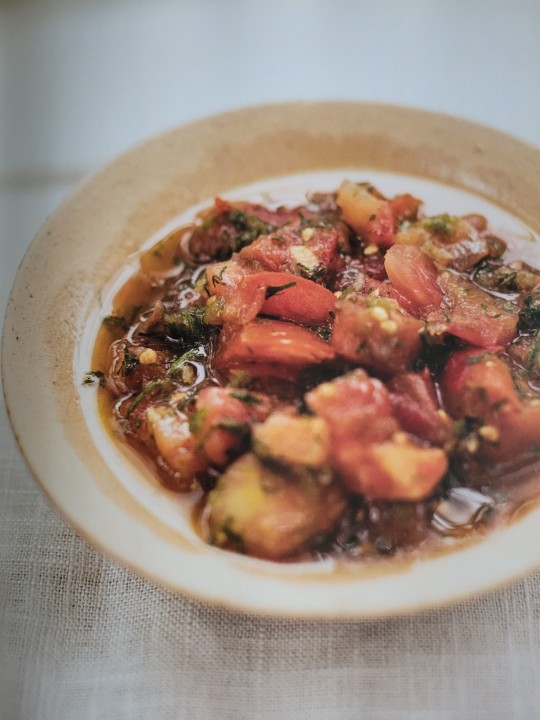
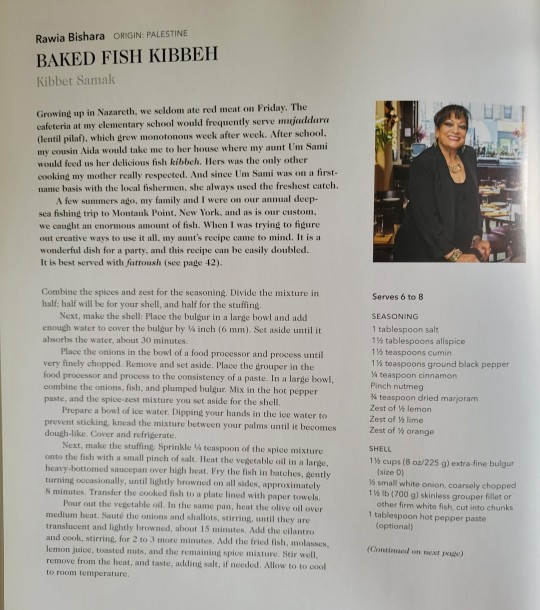
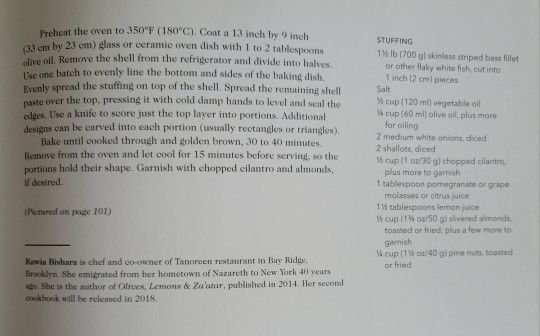
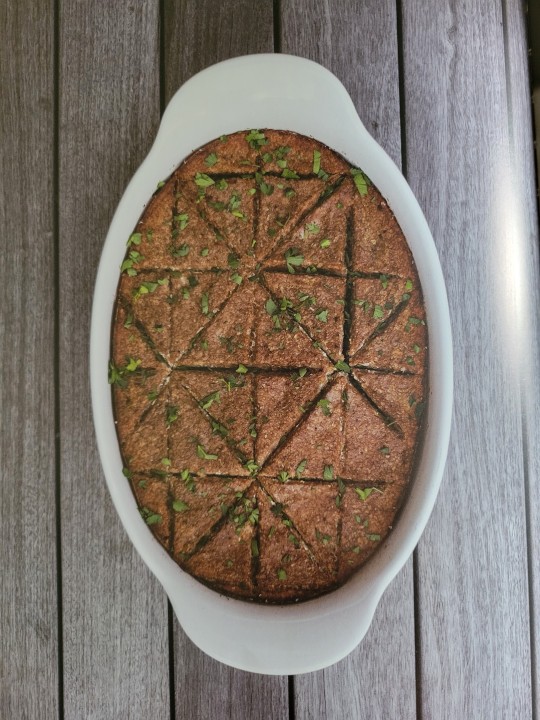
Full page transcripts under the cut:
Recipe #1: Reem's Muhammara
Photo Credit: Jung Fitzpatrick Photography and Ricarius Photography
"Muhammara is my homecoming. I discovered this addicting dip as an adult and fell in love with it when I went back to Syria in 2010. At the time, I was soul-searching in my father's homeland and started to open my eyes to all the richness of my Syrian identity, particularly through the food and hospitality. Up until then I was only exposed to my mother's Lebanese and Palestinian cooking and wasn't well-versed in Syrian food. In every home in Syria, my family would serve multiple mezze dips with dinner and muhammara was always a centerpiece. It has the perfect combination of tangy, nutty, and spicy flavors. And it looks beautiful on a dinner spread. I began to feature it at my farmers' markets and catering, and it became an instant hit. Now it is a staple in my restaurant and represents my Syrian pride. Look for Aleppo pepper and pomegranate molasses in Middle Eastern or specialty grocery stores, and you can easily halve or double this recipe to suit your needs. Serve with your favorite bread."
Makes 4 cups (2 lb / 1 kg)
Ingredients:
2 1/2 lb (1.2 kg) red bell peppers (7 large)
2 1/2 cups (9 oz / 250 g) walnut halves
1 cup (2 oz / 60 g) panko breadcrumbs
2 tablespoons pomegranate molasses
1 tablespoon lemon juice
3-4 garlic cloves
1 teaspoon cumin
1 tablespoon Aleppo pepper flakes
1 teaspoon salt
1/3 cup (75 ml) extra virgin olive oil
Pomegranate seeds, walnuts, or chopped parsley, to garnish optional)
Directions:
Preheat your oven to 400F (200C). Line a baking sheet with parchment paper and place the peppers on it. Roast until the skins are charred, about 30 minutes, turning them over once or twice. Transfer to a sealable bag, or a bowl covered with plastic wrap, and set aside until cool enough to handle. Tear them open, remove the stem and seeds, and peel the skins.
Working in batches, if necessary, combine the walnuts and breadcrumbs in a food processor, and process to a cornmeal-like texture. Add the roasted peppers, pomegranate molasses, lemon juice, garlic, cumin, Aleppo pepper, and salt, and pulse until smooth, turning off the machine and scraping down the sides of the bowl from time to time.
With the processor running, slowly add the olive oil, and blend until the oil is completely incorporated. Taste and add salt, if needed.
Garnish as desired and serve chilled or at room temperature.
"Reem Assil is the chef and founder of Reem's in Oakland, California. Reem's was founded with a passion for the flavors of Arab street-corner bakeries and the vibrant communities where they're located. Growing up in a Palestinian-Syrian household, Reem was surrounded by the aromas and tastes of food from her homeland and the connections they evoked of her heritage, family, and community. Before dedicating herself to a culinary career, Reem worked for a decade as a community and labor organizer, and brings the warmth of community to all her events. In 2017, she graduated from La Cocina, a competitive food business incubator program focusing on immigrant women."
Recipe #2: Gazan Hot Tomato And Dill Salad
Dagga (Salata Ghazawiyya)
Photo Credit: Ricarius Photography
"This is the most frequently served salad in Gaza, with a hot ite that makes it a fantastic accompaniment to meaty stews or rice dishes. Dagga, which is a variation of the work meaning "pounded" in Arabic, is commonly scooped up with Arabic bread, and has a consistency similar to that of a Mexican salsa. This dish must be made in a mortar and pestle with a rough interior (in Gaza, a zibdiya). Don't bother using a food processor!
Though she herself was of mixed Circassian and Kurdish-Damascene ancestry, my late maternal grandmother, il-Sitt Laila, as she was endearingly known, was fond of this classic, and used to refer to it as "the centerpiece of the Gazan table." It was probably the first recipe I learned from my mother, who often tasked us young children with the rhythmic exercise of mashing garlic.
Dagga is one of those recipes you are likely to find Gazan Palestinians making the world over, probably in a zibdiya they've inherited, a great source of pride. The original mortars are extremely hard to come by due to constant closures. They are fashioned from the rich, red clay in Gaza, and a constant reminder that though we may be thousands of miles (and often an unattainable reality) away, we have a part of that earth with us, and we can taste home wherever we go.
You can substitute 1 tablespoon dill seeds for the fresh dill and 2 tablespoons finely chopped onions for the garlic. The dill seeds should be ground in the mortar thoroughly in a circular motion along with some of the salt, before adding the onions and proceeding with the recipe."
Serves 4
Ingredients:
2 garlic cloves, peeled
1/2 teaspoon salt
2-3 hot green chili peppers, such as jalapeno or serrano
1/4 cup (1/2 oz / 15 g) finely chopped dill
3 ripe medium tomatoes, coarsely chiopped
Juice of 1/2 lemon
Extra virgin olive oil
Arabic flatbread or pita, to serve
Directions:
Using a large mortar and pestle, mash garlic and salt to a paste. Coarsely chop up the chili peppers, removing some of the membranes if you prefer less heat. Add the peppers to the mortar and crush until tender. Stir in the dill. Using circular motion, grind the dill until fragrant.
Add the tomatoes and pound until salad reaches a thick salsa-like consistency. Transfer to a serving dish, stir in the lemon juice, and then mix the entire salad well and even out the top with the back of a spoon. Drench the top with a rich olive oil, but don't stir it in.
Serve with Arabic flatbread on the side for scooping it up.
"Laila El-Haddad is a Maryland-based freelance journalist, documentarian, and cookbook author. She is the author of The Gaza Kitchen: A Palestinian Culinary Journey. She frequently writes on the intersection of food and politics and she is currently working on a book about the history of Islam in America, as told through food."
Recipe #3: Baked Fish Kibbeh
Kibbet Samak
Photo Credit: Ricarius Photography
"Growing up in Nazareth, we seldom ate red meat on Friday. The cafeteria at my elementary school would frequently serve mujaddara (lentil pilaf), which grew monotonous week after week. After school, my cousin Aida would take me to her house where my aunt Um Sami would feed us her delicious fish kibbeh. Hers was the only other cooking my mother really respected. And since Um Sami was on a first-name basis with the local fisherman, she always used the freshest catch.
A few summers ago, my family and I were on our annual deep-sea fishing trip to Montauk Point, New York, and as is our custom, we caught and enormous amount of fish. When I was trying to figure out creative ways to use it all, my aunt's recipe came to mind. It is a wonderful dish for a party, and this recipe can be easily doubled. It it best served with fattoush."
Serves 6 to 8
Ingredients:
SEASONING
1 tablespoon saly
1 1/2 tablespoon allspice
1 1/2 teaspoons cumin
1 1/2 teaspoons ground black pepper
1/4 teaspoon cinnamon
Pinch nutmeg
3/4 teaspoon dried marjoram
Zest of 1/2 lemon
Zest of 1/2 lime
Zest of 1/2 orange
SHELL
1 1/2 cups (8 oz / 225 g) extra-fine bulgur (size 0)
1/2 small white onion, coarsely chopped
1 1/2 lb (700 g) skinless grouper fillet or other firm white fish, cut into chunks
1 tablespoon hot pepper paste (optional)
STUFFING
1 1/2 (700 g) skinless striped bass fillet or other flaky white fish cut into 1 inch (2 cm) pieces
Salt
1/2 cup (120 ml) vegetable oil
1/4 cup (60 ml) olive oil, plus more for oiling
2 medium white onions, diced
2 shallots, diced
1/2 cup (1 oz / 30 g) chopped cilantro, plus more to garnish
1 tablespoon pomegranate or grape molasses or citrus juice
1 1/2 tablespoons lemon juice
1/2 cup (1 3/4 oz / 50 g) slivered almonds, toasted or fried, plus a few more to garnish
1/4 cup (1 1/2 oz / 40 g) pine nuts, toasted or fried
Directions:
Combine the spices and zest for the seasoning. Divide the mixture in half; half will be for your shell, and half for the stuffing.
Next, make the shell: Place the bulgur in a large bowl and add enough water to cover the bulgur by 1/4 inch (6 mm). Set aside until it absorbs the water, about 30 minutes.
Place the onions in the bowl of a food processor and process until very finely chopped. Remove and set aside. Place the grouper in the food processor and process to the consistency of a paste. In a large bowl, combine the onion, fish, and plumped bulgur. Mix in the hot pepper paste, and the spice-zest mixture you set aside for the shell.
Prepare a bowl of ice water. Dipping your hands in the ice water to prevent sticking, knead the mixture between your palms until it becomes dough-like. Cover and refrigerate.
Next, make the stuffing: Sprinkle 1/4 teaspoon of the spice mixture onto the fish with a small pinch of salt. Heat the vegetable oil in a large, heavy-bottomed saucepan over high heat. Fry the fish in batches, gently turning occasionally, until lightly browned on all sides, approximately 8 minutes. Transfer the cooked fish to a plate lined with paper towels.
Pour out the vegetable oil. In the same pan, heat the olive oil over medium heat. Saute the onions and shallots, stirring, until they are translucent and lightly browned, about 15 minutes. Add the cilantro and cook, stirring, for 2 to 3 more minutes. Add the fried fish, molasses, lemon juice, toasted nuts, and remaining spice mixture. Stir well, remove from the heat, and taste, adding salt, if needed. Allow to cool to room temperature.
Preheat the oven to 350F (180C). Coat a 13 inch by 9 inch (33 cm by 23 cm) glass or ceramic oven fish with 1 to 2 tablespoons olive oil. Remove the shell from the refrigerator and divide into halves. Use one batch to evenly line the bottom and sides of the baking dish. Evenly spread the stuffing on top of the shell. Spread the remaining shell paste over the top, pressing it with cold damp hands to level and seal the edges. Use a knife to score just the top layer into portions. Additional designed can be carved into each portion (usually rectangles or triangles).
Bake until cooked through and golden brown, 30 to 40 minutes. Remove from the oven and let cool for 15 minutes before serving, so the portions hold their shape. Garnish with chopped cilantro and almonds, if desired.
"Rawa Bishara is a chef and co-owner of Tanoreen restaurant in Bay Ridge, Brooklyn. She emigrated from her hometown in Nazareth to New York 40 years ago. She is the author of Olives, Lemons & Za'atar, published in 2014. Her second cookbook will be released in 2018."
14 notes
·
View notes